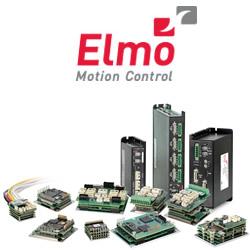Technology Trends Transforming the Logistics Industry
Technology Trends Transforming the Logistics Industry
The logistic industry is blooming with the implementation of technologies. Over the last few years just like any other industry, the logistics industry has started optimizing its productivity with an increase in the implementation of technologies.
AeoLogic Technologies have managed to successfully deploy one logistics automation project for one of the most successful airline companies in India. This software includes radio frequency identification (RFID) technology which has resulted in simplifying the complexity involved in the logistics industry.
This has been made possible because the automation software was not designed based on problems faced by the management, rather it was designed by even considering all the pain points of each and every co-worker involved in the transportation process.
This is the new era of modernization where technology plays an important role and implementing technology is no longer done to get a competitive advantage rather it has become a necessity.
Following are the technologies that AeoLogic Technologies are implementing to transform the logistics industry:
Artificial Intelligence (AI)
Artificial intelligence (AI) is one of the most advanced technologies of recent times. It is software machinery that thinks like human beings. It is showing astonishing results in the transportation and logistics industry. As it is capable of predicting the future based on current market conditions and insights of the business. This enables improvising efficiency, developing effective strategies, and enhancing customer service and assistance. Hence it can be said that AI is a great tool to optimize the logistics business.
Internet of Things (IoT)
Without human assistance, the internet of things (IoT) technology enables better communication between all electronic devices. This smoothens many complex processes involved in the logistics business. The internet of things (IoT) technology leads to warehouse automation by connecting robots and machinery in the warehouse so that they can work without human assistance. This results in cost-saving, improving productivity, and enhancing security in the long run.
Radiofrequency identification (RFID)
Radiofrequency identification (RFID) technology involves two main components. The first one is an RFID chip and the second one is an RFID tracker. The RFID chip gets attached to the item that needs to be tracked. This item can either be any object, animal, or even bird. The RFID tracker continuously sends radio waves and after coming in distant meters with the radio chip it traces the details from it. This process enables the tracking of the shipment on a real-time basis, making both the business owner and customer well informed about their shipment and eliminating all kinds of malfunctioning that can be done with any type of product.
To Conclude
Above mentioned three technologies are just the tip of the iceberg and AeoLogic Technologies is also implementing various other technologies such as robotics advancements, automating warehouses, cloud services, virtual reality (Vr), drone delivery, and blockchain technology to uplift the logistics industry.
All these new technology trends will surely contribute to transforming the logistics industry and enhancing the efficiency, effectiveness, and productivity of the world of transportation.
Featured Product

Elmo Motion Control - The Platinum Line, a new era in servo control
Significantly enhanced servo performance, higher EtherCAT networking precision, richer servo operation capabilities, more feedback options, and certified smart Functional Safety. Elmo's industry-leading Platinum line of servo drives provides faster and more enhanced servo performance with wider bandwidth, higher resolutions, and advanced control for better results. Platinum drives offer precise EtherCAT networking, faster cycling, high synchronization, negligible jitters, and near-zero latency. They are fully synchronized to the servo loops and feature-rich feedback support, up to three feedbacks simultaneously (with two absolute encoders working simultaneously). The Platinum Line includes one of the world's smallest Functional Safety, and FSoE-certified servo drives with unique SIL capabilities.
